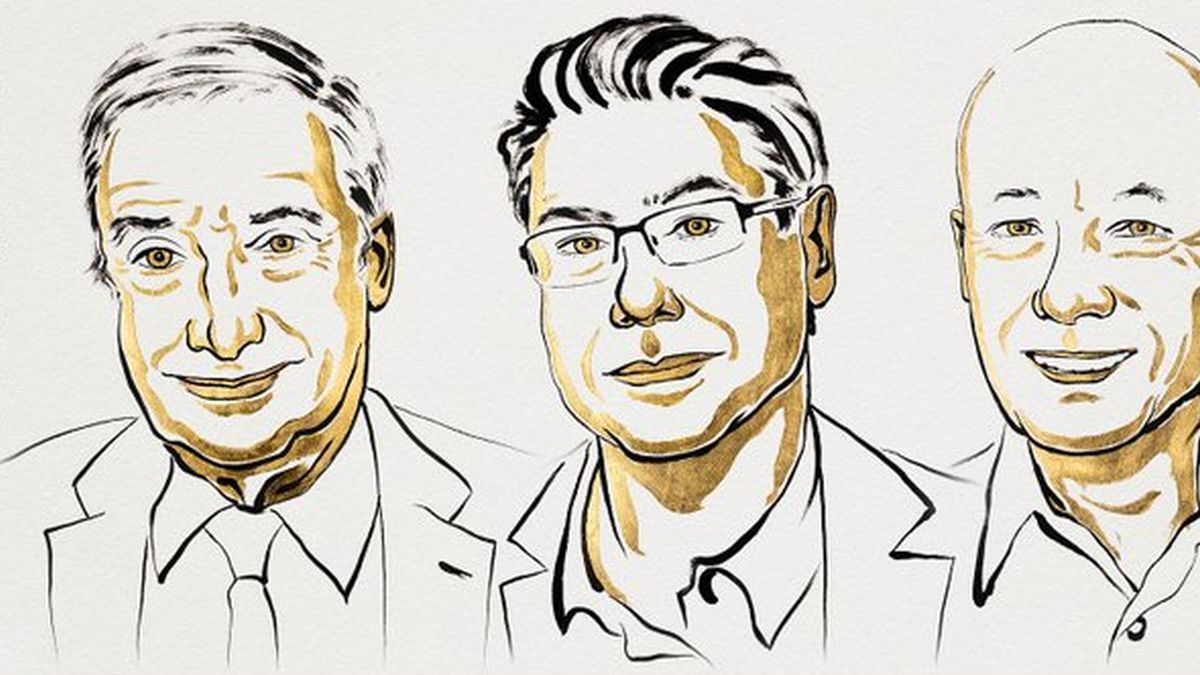For Argentina, 2018 was the year when the bubble of artificial stability exploded. For months, the government held a delicate balance based on high interest rates in dollars for investor, external financing and the hope that speculative capitals would not turn too quickly. But markets have no patience. While the world revolved at a speed that local economic policy could not follow, the perfect storm began to form. The exchange tab of the once seemed a game of children in the face of the volatility of the Argentine peso in this new scenario. When the BCRA interventions stopped taking effect and the capital escape became incontestable, there was no choice but to look for a lifeguard. But what happens when the only available resource is also the most feared?
2017: unsustainable growth and external vulnerability
Like today, Donald Trump assumedHe was the new US president in January 2017, a long time since an American president did not express such nationalism. Globalization was absolute, a system with dogmas and prelates, hence the restlessness and dysfavor that showed populism. With Donald Trump, uncertainty increased. World growth could resent. Interest rates for major installments in the US passed from 1.80% to 2.40%, this affected the risk of emerging countries that would pay their loans more expensive. The cost of financing for Argentina that had already paid prohibitive rates throughout 2016 was further increased. While the emerging world devalued its coins, Argentina “appreciated it”, all as in 2024/2025. The year 2017 was marked by a technical rebound of economic activity, with a 2.9% GDP growth (two years of stagnation were consolidated, with the fall of the GDP per capita). However, that rebound did not respond to an expansion of productive investment, but to financial speculation and the overvaluation of the weight, which generated a deterioration in the competitiveness of the export sector.
The contractive monetary policy continued with high interest rates, which reached 28.75% at the end of the year, encouraging the entry of speculative capital. As a consequence, the current account deficit reached US $ 35,000 million, representing 5.2% of GDP, one of the highest values in the recent history of Argentina. Meanwhile, foreign direct investment (FDI) remained stagnant around US $ 2,500 million quarterly, reflecting the lack of confidence in the sustainable growth of the economy.
The overvalued weight generated a small export growth, only 1.8% per year, while the commercial deficit climbed AU $ S9,000 million. Imports increased 20% in interannual terms, exacerbated by an exchange policy that favored consumer goods and harmed local industry, as is happening right now. The external financing structure depended more and more on the placement of sovereign bonds and provincial debt, which added emissions for more than US $ 30,000 million in the year, with interest rates that were around 7-8% annually.
On December 28, 2017, the Government announced a “recalibration” of inflation goals, increasing the objective of 12-17% to 15% for 2018. This modification generated uncertainty in the markets, weakening the credibility of economic policy and causing a rise in the exchange rate that initiated a more pronounced devaluation process in the following months. The lack of sustained growth in the productive sector generated an increasing dependence on external financing to sustain the economy. In addition, the adjustment of the monetary policy of the United States Federal Reserve led to an increase in international interest rates, which further increased access to external credit for Argentina and accelerated the exit of speculative capital from the first quarter of 2018.
2018: exchange crisis and agreement with the IMF
In January 2018, Christine Lagarde, managing director of the IMF, elliptically warned of the risks of excessive indebtedness in some emerging countries. The Argentine situation began to deteriorate with an accelerated capital escape and the Collapse of Carry Trade, causing growing exchange volatility. Between March and April 2018, the BCRA intervened in the market with sales sales for a total of US $ 15,000 million to sustain the exchange rate. However, these measures failed to stabilize the market, and the depreciation of the weight continued its course.
Until Wednesday, April 25, the BCRA pleased the demand with reservations by maintaining the exchange rate around $ 20.20. Until 04/25, the exchange rate was the same as when it began to intervene on March 5, but inflation in less than two months was 4.3%, which lost half of the competitive improvement achieved between mid -December and March 5 according to the real multilateral exchange rate. The BCRA sold US $850 million in the change market, already difference from the previous day, let the exchange rate of $ 20.20 to $ 20.45 slide.
The BCRA spent US $ 1,400 million in the change market. Finally, he chose to raise the reference interest rate at 300 basic points to 30.25% per year and the short rate of the Lebacs to 30.85%. An earthquake that drew a record sale of dollars and fed uncertainty in exchange policy. On May 14, the BCRA went out to offer $ 5,000 million at $ 25 at $ 25,000. They made the minimum cash compliance with banks more flexible, which in practice implied a decrease in short -term lace that allowed free funds so that they could buy more Lebacs. With the interest rate at 40%, waste 5,000 million dollars (offered daily) to $ 25 the BCRA, with the request for IMF assistance, exchange and financial turbulence did not stop. The BCRA reserves continued to fall and in a week the Argentine titles continued to fall apart.
To stop the capital leak and not fall into default the solution was an agreement with the IMF. The BCRA continued to emit many pesos to finance the treasure, an emission that later had to absorb placing Lebac. The combination of high current account deficit (5.3% of GDP), prohibitive interest rates and increasing distrust of debt sustainability led the government to request a financial rescue to the IMF. The agreement reached implied an initial rating of US $ 50,000 million, which then climb up to US $ 57,000 million that never finished paying for different and permanent types of breaches. As part of the program, the Government implemented a severe fiscal adjustment, with cuts in public spending that represented 2.7% of GDP, in an attempt to reduce the primary deficit.
The impact of the crisis was reflected in The increase in country risk, which exceeded 800 basic points at the end of 2018 when the IMF had been supposed tolimiting access to external financing that began in the first quarter of the year. Meanwhile, the Lebac stock reached unsustainable levels, exceeding $ 1.3 billion (equivalent Au $ S85,526 million), which generated a growing pressure on the BCRA balance. Finally, the lack of confidence in the sustainability of the model led to an acceleration in the dollarization of portfolios and a marked fall in the (FDI) direct foreign investment, deepening the recessive cycle.
By the end of 2018, the perception of the risk of default on Argentine debt increased considerably, further restricting the government’s ability to access international markets, but never again, since the beginning of 2018, credit was achieved. The Argentine economy closed the year with a scenario of high uncertainty, characterized by a fall in productive activity, uncontrolled inflation and external indebtedness that compromised tax sustainability in the medium term. The forecast errors of public officials and private consultants of 2018 would be strange: the inflation forecast at 11% was 47.6%, the dollar predicted at $ 20 was $ 40, the growth of the GDP of (+2.5) was fall of (-2.5). The uncertainty and error of Caputo, Sturzenegger and Dujovne expressed an ex -ranges evaluation that ex post showed us the degree of reliability of their predictions.
The agreement with the IMF was not the end of the story, but the beginning of a new chapter. The conditions imposed, the fiscal adjustment and the dependence of an increasingly precarious financing configured a scenario in which each decision had the potential to unleash another crisis. But the most disturbing thing was not the immediate impact of the agreement, but what was to come: could Argentina avoid falling into an even deeper spiral of recession, inflation and indebtedness? The answer, as always, would soon arrive. In the next and last article, we will explore how emergency measures did nothing more than postpone the inevitable and why, sometimes, the fastest exit of a crisis is also the most dangerous.
Director of Esperanza Foundation. https://fundacionesperanza.com.ar/ UBA postgraduate professor and masters in private universities. Master in International Economic Policy, Doctor of Political Science, Author of 6 Books
Source: Ambito
David William is a talented author who has made a name for himself in the world of writing. He is a professional author who writes on a wide range of topics, from general interest to opinion news. David is currently working as a writer at 24 hours worlds where he brings his unique perspective and in-depth research to his articles, making them both informative and engaging.




